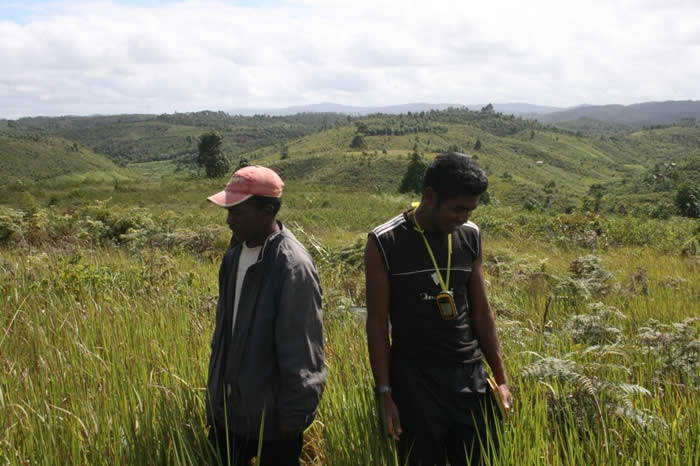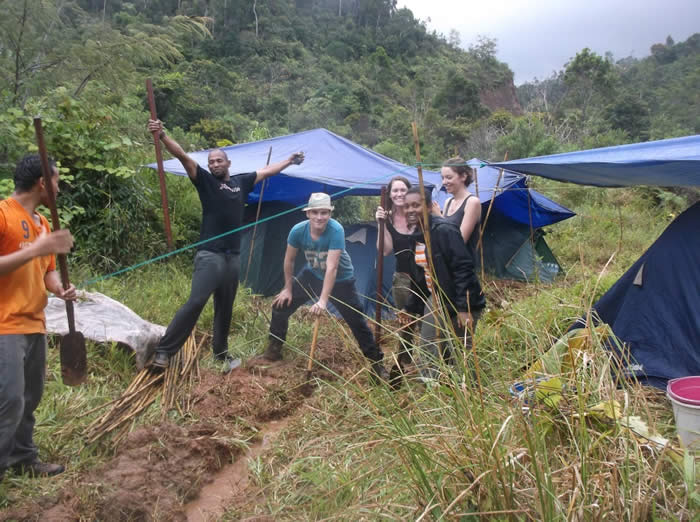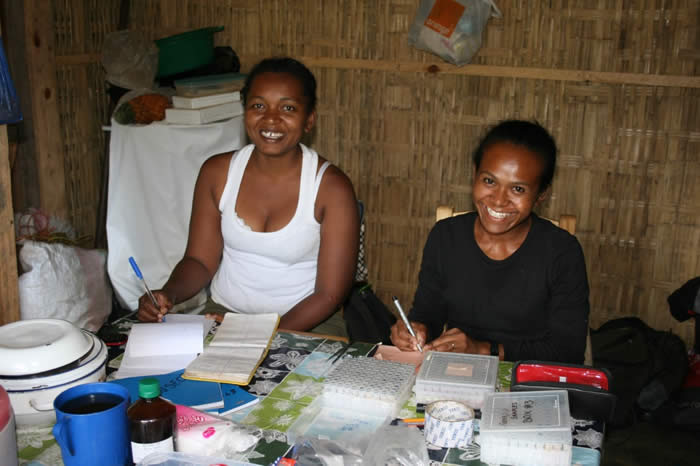
p4ges - Can Paying 4 Global Ecosystem Services reduce poverty?
Blog on Andasibe fieldwork

Debbie Bower is an Australian herpteologist who has been volunteering with the p4ges biodiversity team.
Here are her reflections after 6 weeks in the field.
 I have just returned from six weeks of fieldwork in the Andasibe area of Madagascar, where I joined a collaborative project looking at how payments for ecosystem services can reduce poverty. I was the sixth person in my team of Malagasy colleagues on the biodiversity team ranging from local guides through to qualified scientists. This provided the perfect opportunity to further practice my Malagasy, which I’m proud to report is now refined enough to firmly establish a topic of interest as I blurt out random words in the wrong order, sometimes mixed with Portuguese when I’m especially flustered.
I have just returned from six weeks of fieldwork in the Andasibe area of Madagascar, where I joined a collaborative project looking at how payments for ecosystem services can reduce poverty. I was the sixth person in my team of Malagasy colleagues on the biodiversity team ranging from local guides through to qualified scientists. This provided the perfect opportunity to further practice my Malagasy, which I’m proud to report is now refined enough to firmly establish a topic of interest as I blurt out random words in the wrong order, sometimes mixed with Portuguese when I’m especially flustered.

My confidently spoken Malagasy often evokes fits of hysterics from my audience; I have indeed decided that I’m quite the comedian over here. Fortunately, my lack of fluency and/or ability to understand the world around me doesn’t seem to stop Malagasy folk from engaging in apparently in depth conversations, to which I apply the smile, nod and occasionally giggle principle.
 We stayed at five different campsites ranging from sloping lantana hills, to a fancy cabin with electricity. It was definitely novel and amazing to see lemurs and chameleons wandering around the campsite instead of possums and goannas. We did a week’s survey at each site where we checked pitfall traps (buckets dug into the ground at 10 m intervals, underneath a fence used to dissect moving vertebrates). I had forgotten how much I love trapping, each bucket a surprise, sometimes including lizards or frogs but once with seven hedgehog- like tenrecs inside – oh the joy. We also completed a diurnal and nocturnal search each day, which was pretty much just a competition to see who could find the most animals. I held my own in the frog category but turns out I suck at spotting chameleons. They are simply everywhere and range from the size of a coin to massive, biting beasts. All up, the trip was a grand initiation into Malagasy fauna and provided the start of a solid dataset to begin researching the biodiversity value of different land use types.
We stayed at five different campsites ranging from sloping lantana hills, to a fancy cabin with electricity. It was definitely novel and amazing to see lemurs and chameleons wandering around the campsite instead of possums and goannas. We did a week’s survey at each site where we checked pitfall traps (buckets dug into the ground at 10 m intervals, underneath a fence used to dissect moving vertebrates). I had forgotten how much I love trapping, each bucket a surprise, sometimes including lizards or frogs but once with seven hedgehog- like tenrecs inside – oh the joy. We also completed a diurnal and nocturnal search each day, which was pretty much just a competition to see who could find the most animals. I held my own in the frog category but turns out I suck at spotting chameleons. They are simply everywhere and range from the size of a coin to massive, biting beasts. All up, the trip was a grand initiation into Malagasy fauna and provided the start of a solid dataset to begin researching the biodiversity value of different land use types.

